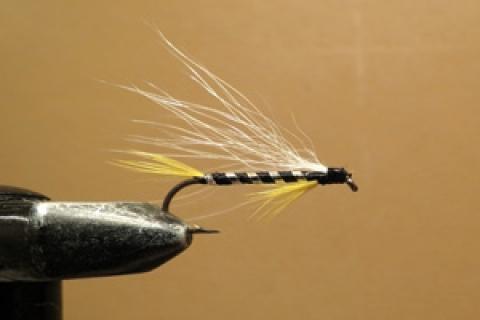
 Ask two fly tiers of equal skill levels to tie the same bucktail pattern and you're very likely going to see two subtly different versions. One will be fuller and, at first blush, perhaps a little more appealing to the angler; the other will be sparsely dressed and, the odds are, it will catch more fish.
Ask two fly tiers of equal skill levels to tie the same bucktail pattern and you're very likely going to see two subtly different versions. One will be fuller and, at first blush, perhaps a little more appealing to the angler; the other will be sparsely dressed and, the odds are, it will catch more fish.
There are a few logical reasons for this. First, a sparsely dressed bucktail streamer is less buoyant and presents a sleeker, more minnow-like pattern when wet. Watch a sparse bucktail work in a current and you might note it appears less stiff and livelier than a heavily tied one. Each little twitch of the rod tip activates it, so it transforms into a remarkably convincing imitation of a baitfish. Choose the right pattern and you're well on your way to having a memorable day.
This is one of those examples of less being more. The lesser number of hairs allows for greater translucence and also exposes the underbody so it is seen more fully. That's important because, on many patterns, that is where the flash comes from.
There are also advantages in terms of tying. For one thing, it's far easier to build a neater bucktail when you haven't over-stacked it with too much material. More hair is harder for the tyer to manage, and therefore it is often laid down in a sloppier manner. And, let's not forget that the head of a heavily dressed bucktail, because of all the material that must be lashed to the hook, tends to be overly large too - which is aesthetically displeasing for most of us.
Remember, bucktails are meant to be fished in faster water — that's where they really shine. The reason for this is the pulsating rhythm of the current causes the deer hair to move and come to life. And when retrieved against the flow they take on that sleek, decidedly minnow-like profile that completes the illusion. Ones that aren't over-dressed do that, in my experience, so much better.
Like all things in fly fishing, and life in general, there are exceptions to the rule. Sometimes, it doesn't hurt to have a heavily dressed bucktail.
When fishing for largemouth bass, pike or very large trout, for instance, meatier bucktails often work very well. But I suspect that's more about the larger profile than the enticing action that can be imparted upon it.
In most instances, however, sparse is the word.
- 2675 views

